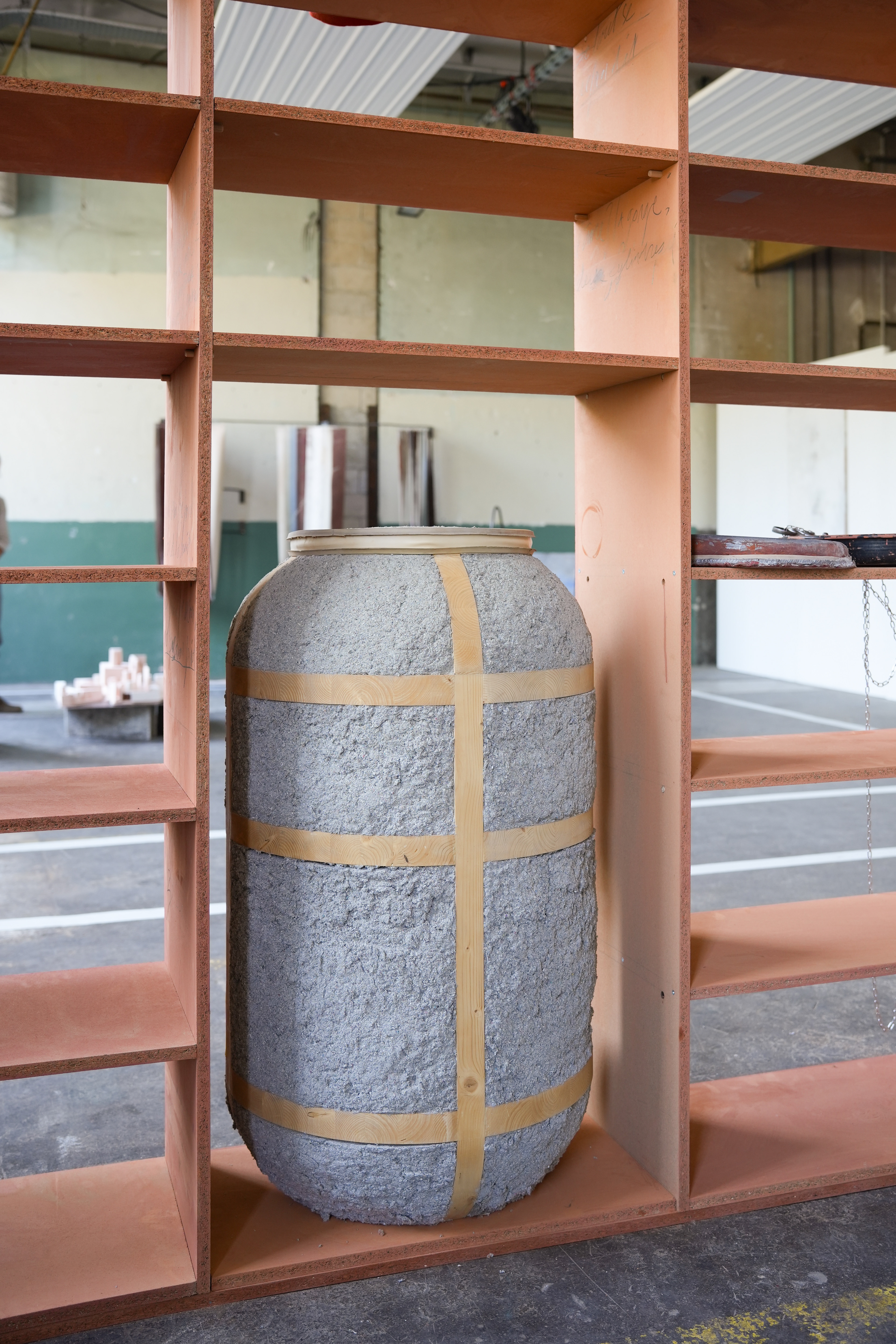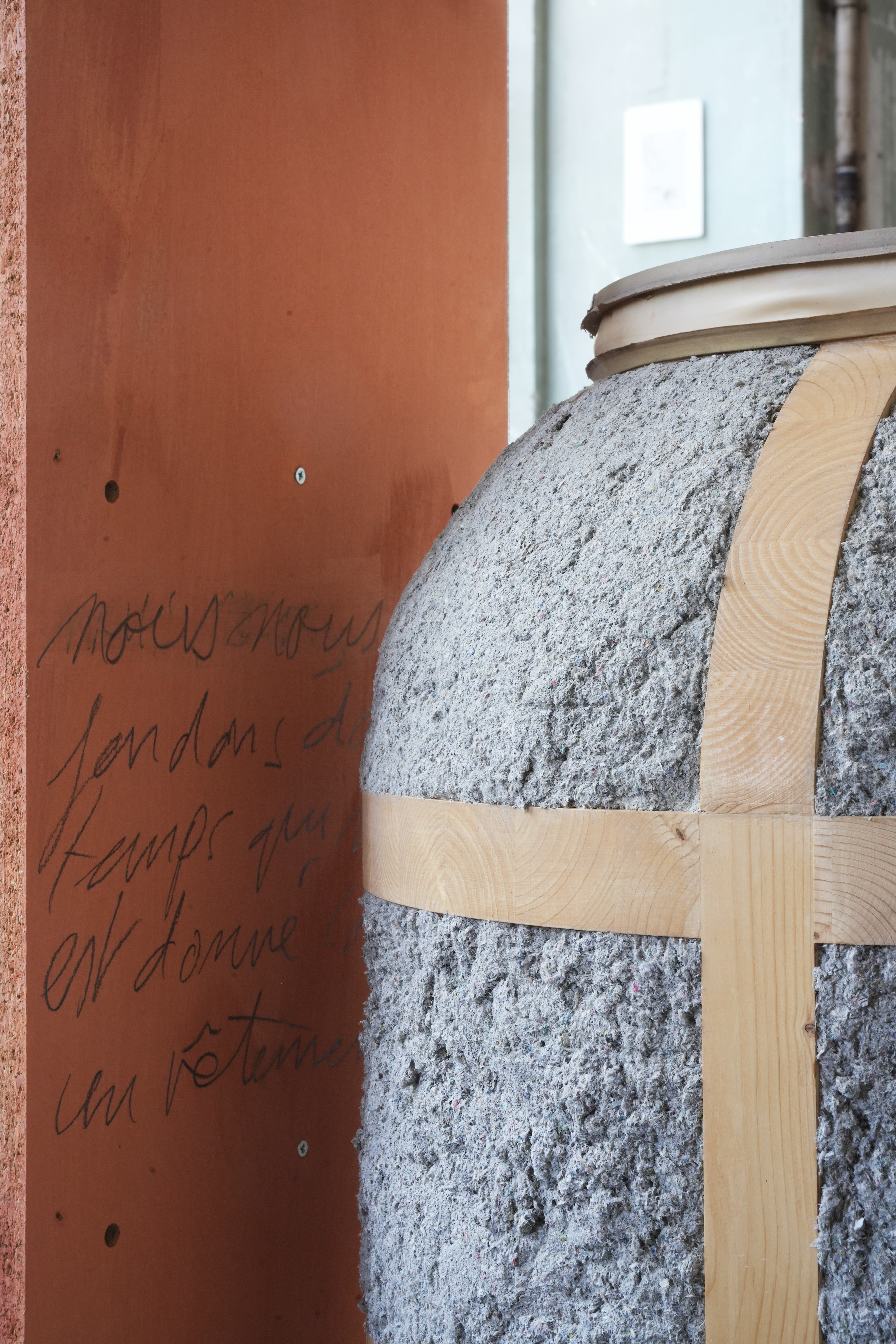
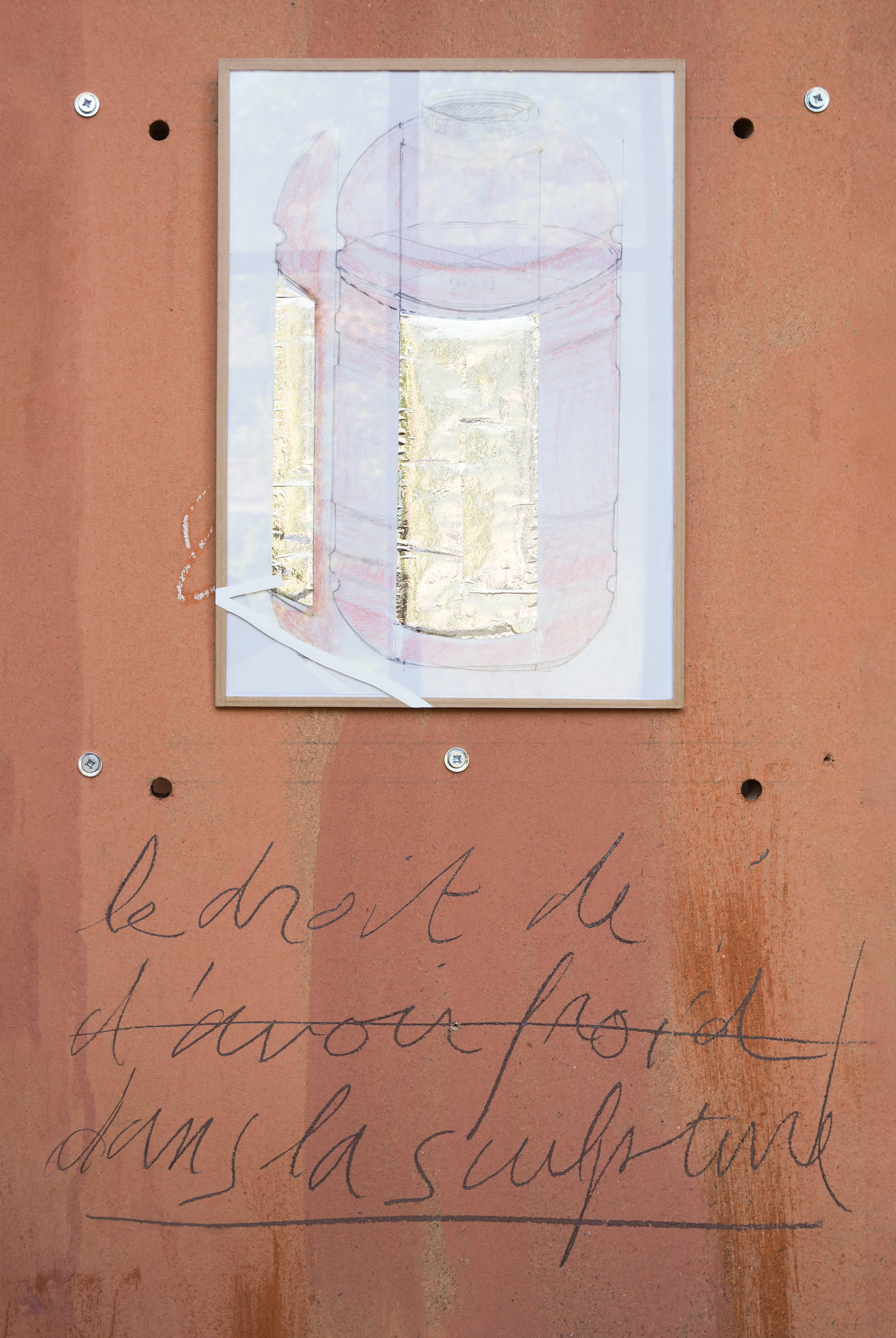
Bois, argile, couvertures polaires, plomb, ouate d'isolation, mine graphite, bande élastiques.
Cette installation compose des éléments au sein d’une grande bibliothèque.
Ce mobilier d’usage est ici un espace physique qui convoque de nombreux autres espaces :
L’espace imaginaire et littéraire, la bibliothèque est une surface pour le texte. Sur son revêtement en argile, la bibliothèque absorbe, pense et panse.
L’espace de confort pour le corps, la bibliothèque présente des couvertures polaires mises à la disposition du public.
. Un espace de protection : la bibliothèque met en avant un vocabulaire de matériaux en lien avec le soin, l’isolation et la construction de logements (latex, laine d’isolation, joints).
. Un espace politique/poétique, le tract, le graffiti présents dans la bibliothèque y inscrivent de pensées dont le sens transite de l’image poétique au slogan, de l’image à s’approprier personnellement jusque dans le partage d’un pensée manifeste et douce à répéter.
Les visiteu.r.se.s peuvent emprunter à la sculpture, se couvrir dans son aspect, rencontrer son univers en la portant, en s’y confondant. La bibliothèque est une surface, mais c’est aussi un miroir, elle met à l’extérieur, elle expose. Elle lie ce qu’il est habituel de séparer : théorie et construction, poétique et pratique, inutile et fonctionnel. Matériaux du chantier et livres de salon s’y trouvent pris dans la même urgence, dans le même besoin vital de se protéger, de se couvrir, d’à la fois briser les isolements humains et d’apprendre à s’isoler du froid, de la stérilité des pensées pré-fabriquées. Dans cette alternance entre des casiers remplis d’objet, de texte, ou de matière, et de casiers vides est activé un dernier espace propre à la sculpture : laisser quelque chose, se dévêtir, perdre à dessein, se délester d’une chose, d’un mot, d’une idée, d’un manteau.
Wood, clay, red fleece blankets, lead, insulation wadding, lead pencil (writings), rubber band.
This installation assembles elements within a large library. This functional furniture here becomes a physical space that summons numerous other spaces :
The imaginative and literary space, where the library serves as a surface for text. With its clay covering, the library absorbs, contemplates, and soothes.
The space of comfort for the body, as the library offers polar covers available to the public.
A space of protection: the library highlights a vocabulary of materials related to care, insulation, and housing construction (latex, insulation wool, joints).
A political/poetic space, where pamphlets and graffiti within the library inscribe thoughts that transition from poetic imagery to slogans, from images to be personally appropriated to the sharing of a manifest and gently repeatable thought.
Visitors can borrow from the sculpture, wrap themselves in its aspect, encounter its universe by wearing it, by merging with it. The library is a surface, but it is also a mirror, it projects outward, it exhibits. It connects what is customary to separate: theory and construction, poetic and practical, useless and functional. Materials from construction sites and books from the salon are caught in the same urgency, in the same vital need to protect oneself, to cover oneself, to simultaneously break human isolations and learn to isolate oneself from the cold, from the sterility of pre-fabricated thoughts. In this alternation between lockers filled with objects, text, or matter, and empty lockers, a final space specific to sculpture is activated: leaving something behind, undressing, intentionally losing, unburdening oneself of a thing, a word, an idea, a coat.
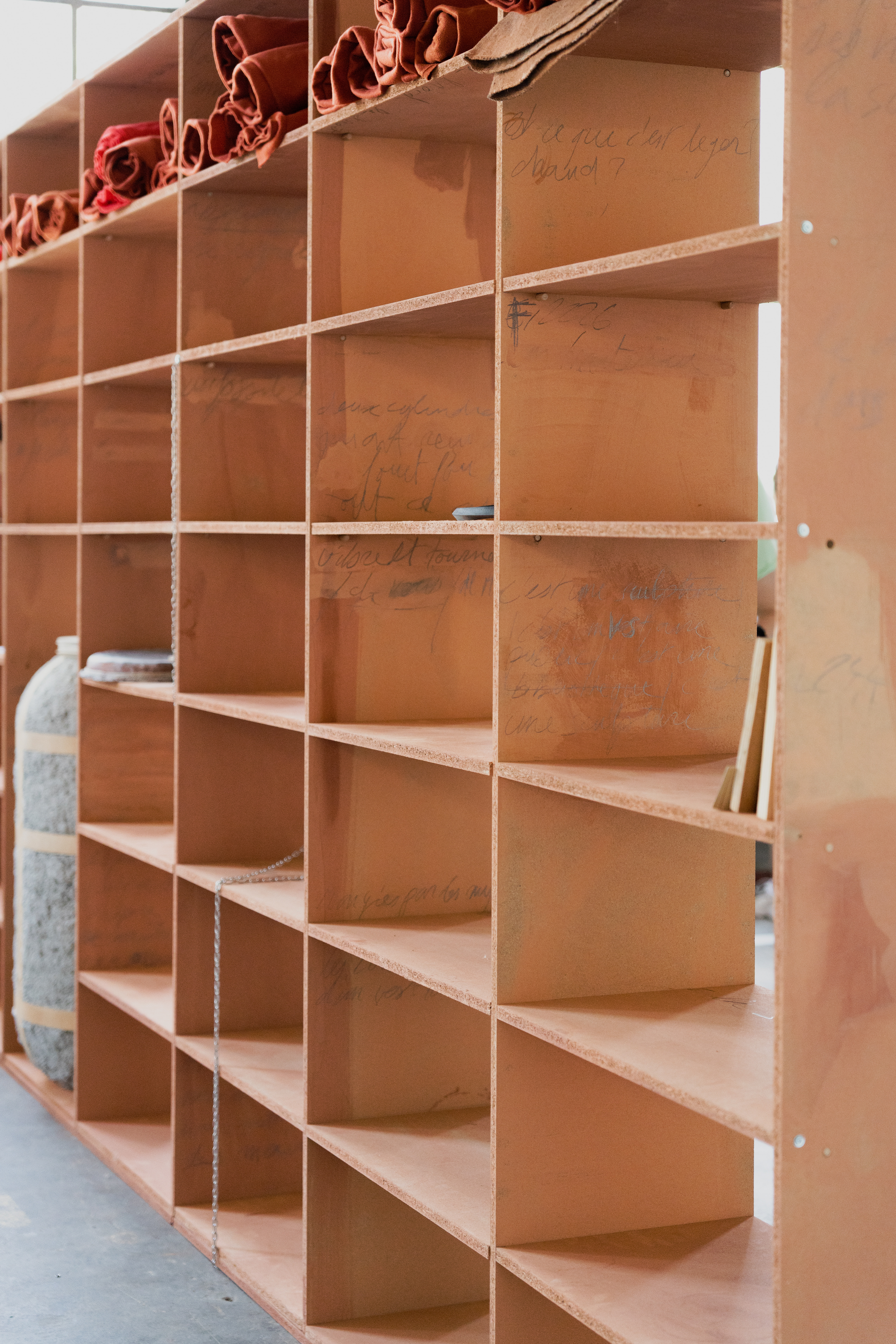
© Maxime Bagni
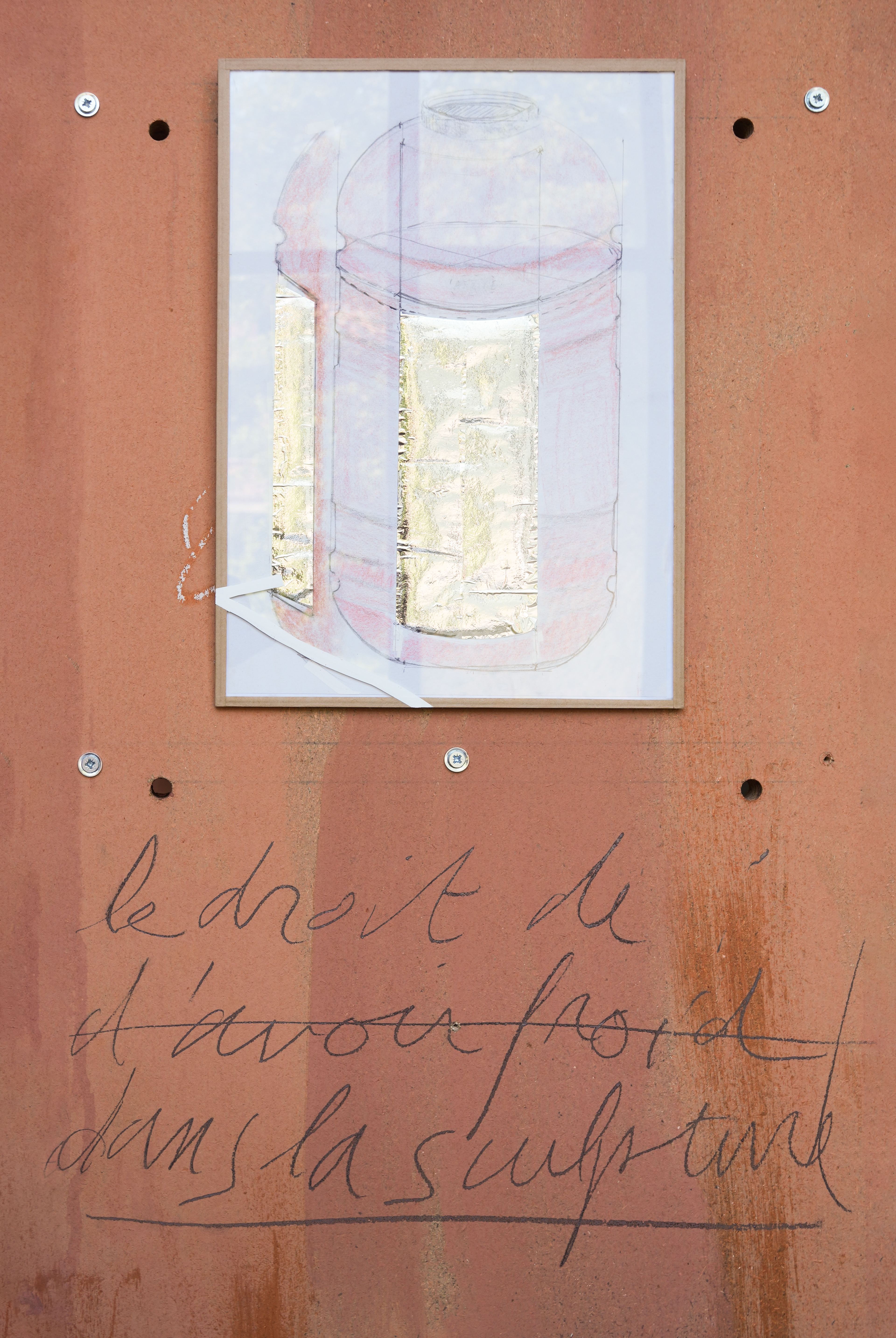
© Maxime Bagni
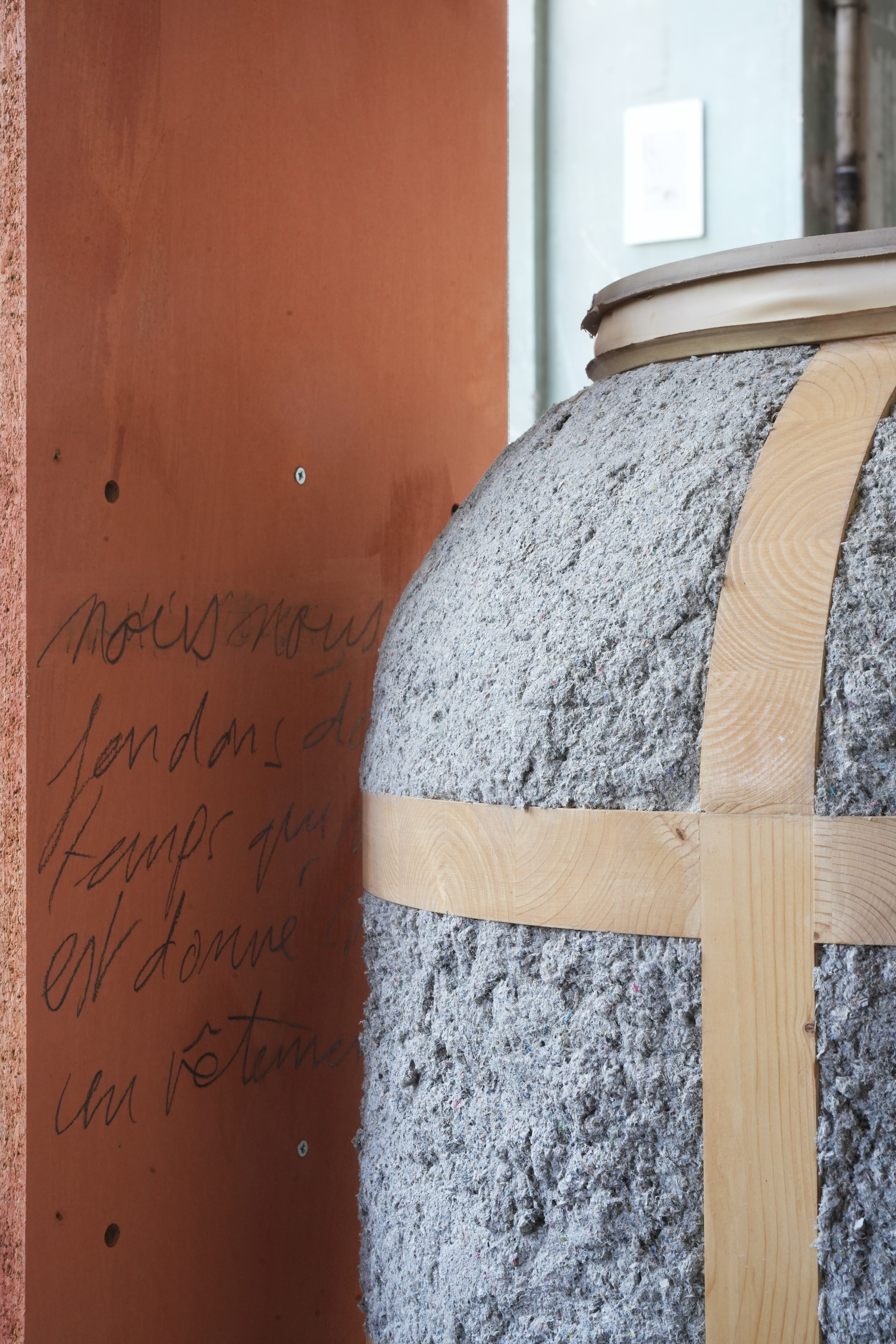
© Maxime Bagni

© Maxime Bagni
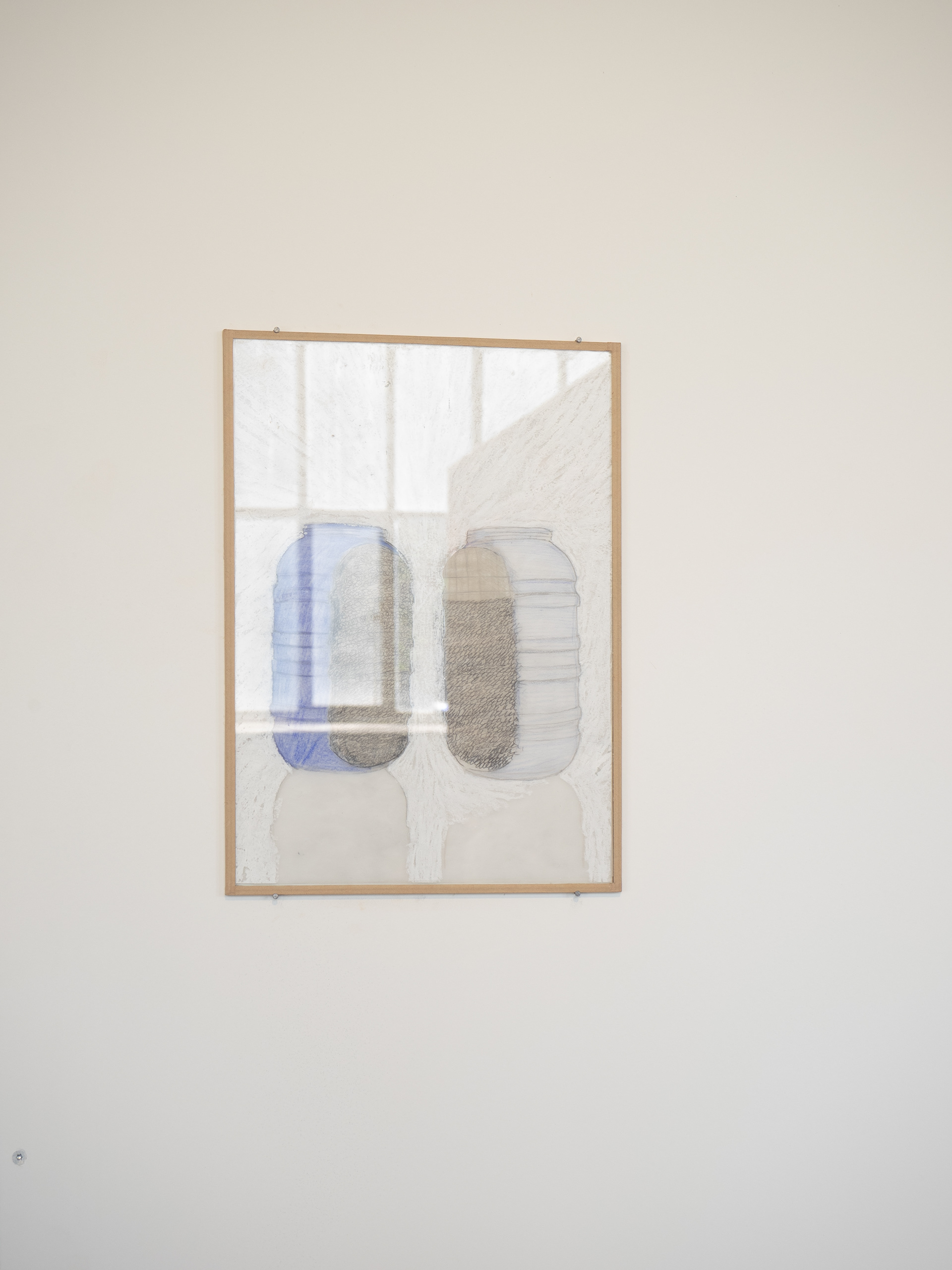
© Maxime Bagni

© Maxime Bagni
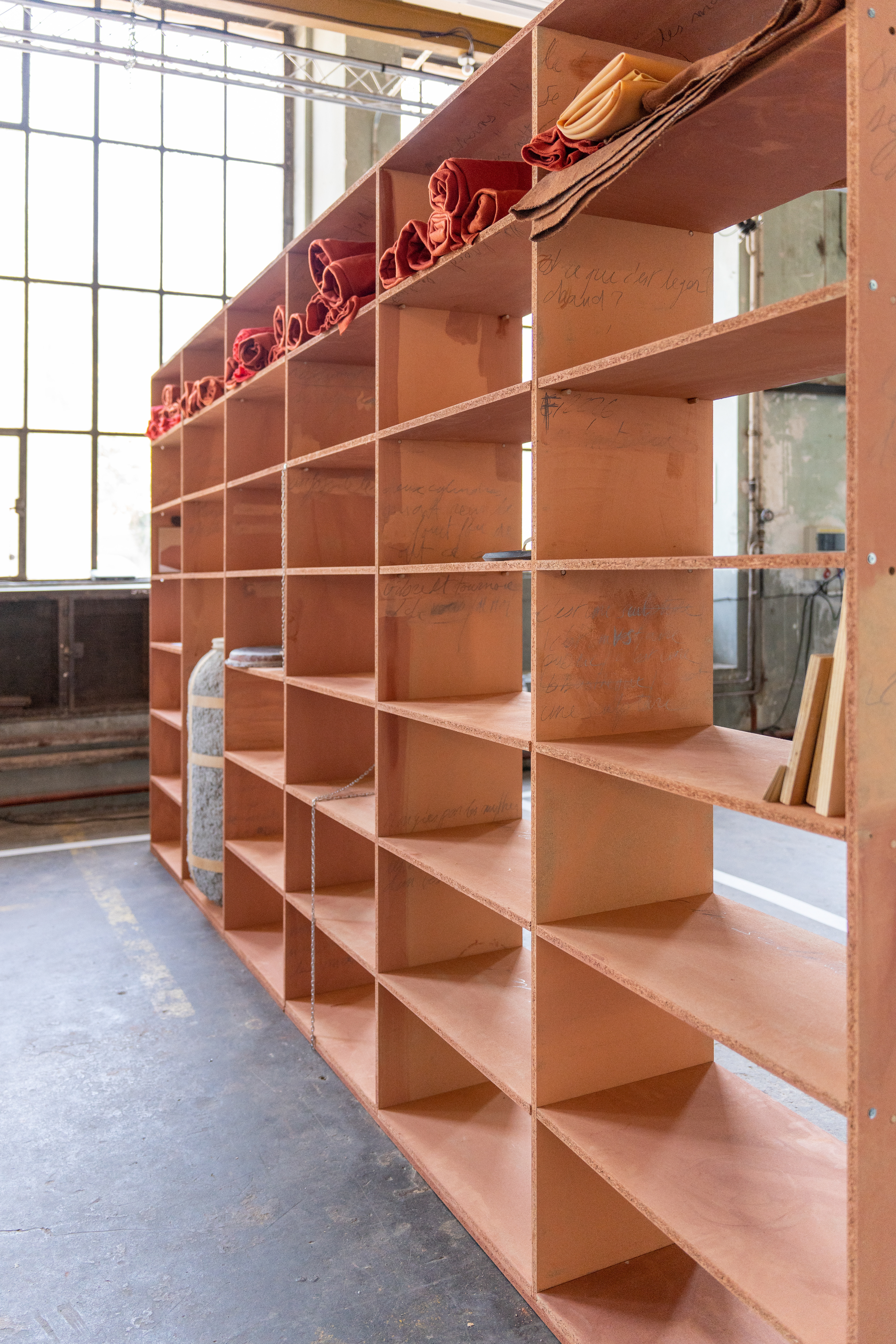
© Maxime Bagni

© Maxime Bagni
